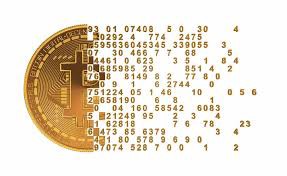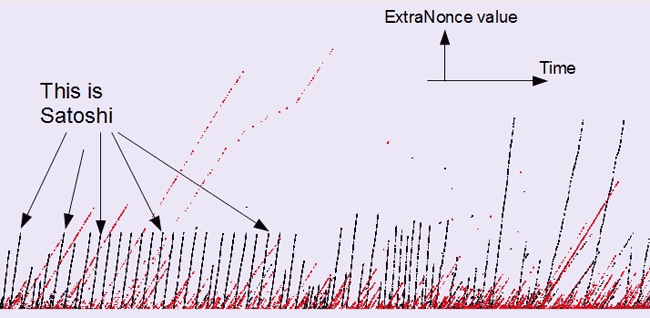
Bitcoin cryptocurrency creator Satoshi Nakamoto remains the most mysterious billionaire on the planet. This is one or more people whose identity (s) are not known to anyone. More precisely, not known to the general public. According
to the well-known Internet entrepreneur and investor Alexander Muse, who refers to his sources in the Ministry of National Security, the specialists still managed to de-anonymize Satoshi using PRISM, MUSCULAR and
Stylometry systems. However, no one checked the reliability of the source - and it’s far from a fact that the NSA was not mistaken in its calculations. At the very least, no one is going to make public the real name Satosi.
Regardless of the credibility of the results of the investigation, it is very interesting what methods the NSA uses to de-anonymize users who publish many texts on the Internet: in forums, in unprotected chats, in emails.
The search for the creator of Bitcoin goes on for many years.
A
linguistic analysis of all online messages on behalf of Satoshi Nakamoto (≈80 thousand words on forums and in distribution letters) conducted in 2011
showed that this person is fluent in English, writes in a bright and clear style, and makes very few typos. In the very first message, he used American English, but after that he completely switched to classical spelling using words such as
color instead of
color ,
gray instead of
gray and so on, decorating texts with exquisite phrases like
bloody hard .
Simultaneously with the linguistic analysis, the analysis of the program code was carried out. He led to the conclusion that the program developer is “a world-class programmer with deep knowledge of C ++ and an extensive background in the field of cryptography, economics and P2P systems”.
Simultaneously with the independent specialists, the NSA conducted its work on the de-anonymization of the legendary cryptographer. They used stylometry methods.
What is stylometry in practice? As you know, people tend to repeat in the texts. Even the smartest person can sometimes use the same phrase twice. This is especially true of technical terms and formulations, where the stereotyped statements are particularly high.
This feature was used in the NSA. According to Mews, the specialists applied the stylometric method called the “
author's invariant ”. By definition, this is a quantitative characteristic of literary texts or a certain parameter that uniquely characterizes with its behavior the works of one author or a small number of “close authors”, and takes essentially different meanings for works of different groups of authors. The author's invariant is traditionally used in the task of identifying the authorship of a text.
In this case, the famous texts of Satoshi are compared with trillions of samples of texts of other authors on the Internet. In particular, the NSA identified the 50 most popular words (phrases?) In Satoshi texts. Then his texts were broken down into 5,000 text fragments, for each of which the frequency of these 50 words was calculated. The result was a unique identifier for each piece of 50 digits. Then, explains Mews, each of the numbers obtained was placed in 50-dimensional space and projected onto a plane using
the principal component method . As a result, we got a certain digital print of texts by Satoshi Nakamoto, which establishes his authorship.
Having received the imprint, the NSA set the task of identifying the author. To do this, they scanned a massive archive of emails stored in the process of eavesdropping on Google, Yahoo, and other mail systems (
PRISM ). In addition, the data obtained in the process of archiving
all Internet traffic from data centers of Google, Yahoo, Amazon and Facebook was compared with a digital fingerprint via bookmarks on fiber-optic cables near data centers - the
MUSCULAR system (the American equivalent of the Spring Act).
As a result, Satoshi's unique prints compared letters and chats of one billion people to reveal his personality. Reportedly, the process took less than a month and gave a positive result.
Why did the NSA bother with such a project? A source at Mews says that at first, the Obama administration was suspicious of the Bitcoin project. There was a version that Satosi Nakamoto could be a Russian or Chinese agent, and Bitcoin itself threatens the global financial system. Knowledge of the personality of Satoshi was to help establish his motives. What are the results of the investigation - is unknown. But the fact is that total traffic interception helps to deanonymize many Internet users by means of stylometry.
Linguistic investigation of Peneberg
It should be noted that as early as 2011, a professor of journalism and professional linguist Adam Penenberg from New York University
conducted a linguistic analysis of Satoshi’s texts . In his opinion, the developer of Bitcoin deliberately used the British disguise to impede the linguistic analysis of his texts, that is, he has an extraordinary intellect and knows how to cover his tracks. So the NSA could well be a fool.
During his investigation, Adam Penenberg studied the texts of Satoshi Nakamoto for several months and checked his specific phrases. In the end, the journalist was lucky - he found that a specific combination of words [computationally impractical to reverse] was found on the Internet only 26 times, mostly copies of the same document. But there is another document with the same combination of words. This is U.S. Patent Application No. 20100042841
Updating And Distributing Encryption Keys , published on February 18, 2010. This application describes a cryptographic system, largely based on the same principles as Bitcoin technology. The attention of the researcher attracted one fact. The patent application was filed on August 15, 2008, and the domain bitcoin.org was registered on August 18, 2008, another coincidence.
The authors of the patent application listed three people - Neal King (Neal King), Charles Bry (Charles Bry) and Vladimir Oksman (Vladimir Oksman). Further investigation allowed the alleged identification of these people. All of them are authors of several more patents close to Bitcoin technology.
Neil King and Charles Bray are residents of Munich (Germany), and Vladimir Oksman, perhaps, is a programmer of Russian origin, Vladimir [Vova] Oksman, who lives in New Jersey and works for Samsung (at the moment Vladimir has moved to Goldman Sachs ,
LinkedIn profile ).
Two months before the launch of Bitcoin.org, these three registered another patent application, which also speaks for itself:
Key Management For Communication Networks .
Neil King fits best under the linguistic and psychological portrait of Satoshi Nakamoto, the author of the investigation believes. Judging by his Facebook profile, he is a very educated and fantastically well-read person, he left reviews for 46 books on Amazon, including astronomy, biology, cryptography, linguistics, literature, mathematics, philosophy, and physics. Moreover, these reviews are written in an excellent literary style, very clean, without a single superfluous word and typos, just like Satoshi Nakamoto. However, like the rest of the potential collaborators, Neil King denied any involvement in Bitcoin. Six years ago, he gave a very long answer to a direct question and spoke in the sense that he had never heard of Bitcoin at all and he had to study an article in Wikipedia.
A cryptologist who hasn’t heard about Bitcoin is about the same as a journalist who doesn’t know about Twitter, according to Adam Penenberg. He also recalled several examples of how many famous writers and inventors published their works anonymously and at first denied the fact of authorship. However, few managed to preserve anonymity forever.
Deserved wealth Satoshi Nakamoto
In 2013, security specialist Sergio Lerner (Sergio Demian Lerner) conducted a thorough analysis of initial transactions and
convincingly proved that from January 3, 2009 to January 25, 2010, only one person was engaged in mining, and the absolute majority of coins mined at that time him still.
Obviously, this same person was the creator of cryptocurrency, which we know under the pseudonym Satosi Nakamoto.
 The black and red colors indicate the generation and waste of coins in the interval between blocks 1 and 36288
The black and red colors indicate the generation and waste of coins in the interval between blocks 1 and 36288The Bitcoin algorithm assumes an increase in the complexity of transactions with a steady flow of new money into the system, so at first it was very easy to generate coins. A typical Pentium class CPU was enough to get 50 BTC every 10 minutes.
Of course, it is impossible to say 100% that the coins generated at first belong to Satoshi, but the fact is that someone started mining from the first block and continued it for a whole year at a
stable speed of about 7 megabytes per second , with short pauses approximately every 100 hours presumably for backing up the wallet.
According to the author, in the first few months, Satoshi produced about 1 million coins.
In general, out of 1,814,400 first generated coins, about 1,148,800 BTC were never spent, that is, about 63%. Perhaps almost all of these coins are still at the disposal of Satoshi.
Bitcoin and Moore's Law
It would seem that quite recently we were happy that Bitcoin
had reached parity with the dollar , although even then some people expressed the opinion that this is a kind of digital bubble that will soon burst. Nevertheless, the cost has since increased exponentially, in fact, obeying Moore's law, that is, approximately doubling in equal intervals of time.
The fact that Bitcoin obeys Moore's law, Harvard scientist Dennis Porto
said in a recent interview with
Business Insider UK .
According to Porto, fast-developing technologies have a certain doubling rate, which means doubling their effectiveness over a consecutive, repetitive period of time. Typically, Moore's law was applied to processors on a chip, but in a broad sense, it can be applied to any digital technology that demonstrates exponential growth. According to Porto, if the trend continues further, then the cost of 1 Bitcoin by February 2021 will exceed $ 100,000.
In this case, Satoshi Nakamoto’s fortune will increase to about
$ 100 billion , provided that he resists the temptation to sell bitcoins earlier. And also provided that the US dollars will remain in circulation by that time. Be it one person or several, he fully deserves his money.
But even seven years later, critics began to assert that we are seeing a bubble like tulipmania of the 17th century. Bubble talks began when the 1 BTC rate rose sharply from $ 0.15 to $ 1.10 in a short amount of time.